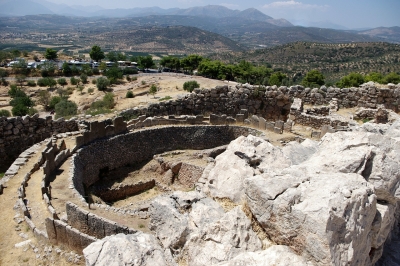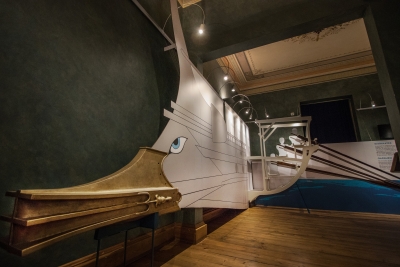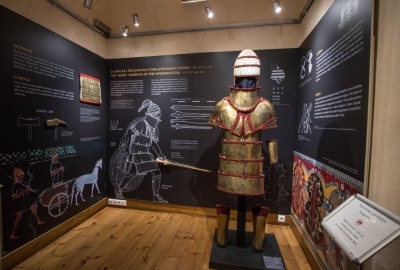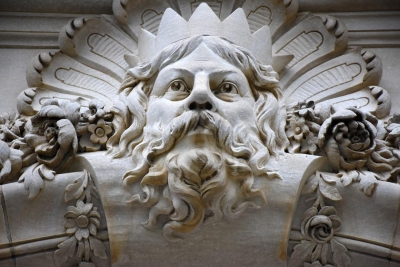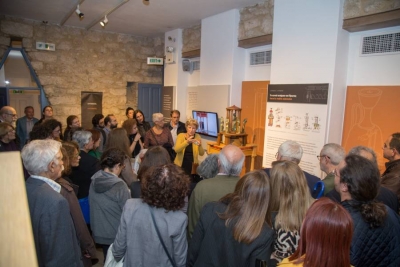Glorious chapters of mycenaean engineering (Part 2)
Tuesday, 12 October 2021 16:42Archeological finds, throughout Greece and in numerous areas of Mediterranean sea (from Syria to Sardenia), have confirmed a good part of the alleged technophilia of the Acheans, i.e. the mycenaean world. During the second half of the 2nd Millennium BCE, Mycenaeans have developed an advanced Technology, many centuries before the classical and the Hellenistic times which seem to be better studied from this point of you.
Glorious chapters of mycenaean engineering (Part 1)
Wednesday, 06 October 2021 11:48Archeological finds, throughout Greece and in numerous areas of Mediterranean sea (from Syria to Sardenia), have confirmed a good part of the alleged technophilia of the Acheans, i.e. the mycenaean world. During the second half of the 2nd Millennium BCE, Mycenaeans have developed an advanced Technology, many centuries before the classical and the Hellenistic times which seem to be better studied from this point of you.
Hellenistic Technology
Wednesday, 25 September 2019 17:05Ancient Greek Technology was already developed since the Mycenaean period, and up to the Classical times. Then, Aristotle (Politics, 1255.6, 35) predicated a political utopia based only on the advent of automatic and robotic machines, in order to eliminate oppression of rulers and slave-owners. This technological revolution was indeed conceived during the Hellenistic period, mainly in its "alma terra", Alexandria.
Production and maintenance of the triremes
Tuesday, 17 September 2019 14:54It has been said that in classical times Athens had a production capacity of at least 20 triremes per annum" - especially if an extra workforce from out of town could be encouraged to come to Athens. This figure, however, seems rather small considering the speed with which Agathocles, the Syracusans' general during the siege of Carthage, built (within a few weeks, probably) a triaconter which hastened back to Syracuse to inform his fellow citizens of the true war situation (Diodorus, 20.16.3).
The ram
Monday, 28 January 2019 17:27Since the Mycenean times, the typical ship (the penticontoros) was both a merchant and a war ship; to this end it was equipped with a heavy metallic "ram" at the front end of the keel, destined to "ramming" the ship of the adversary, sidewise, thanks to extremely well coordinated actions of the rowers ("forwards" - "backwards", at full speed). This tactic was culminated with the athenean trireme, as well as during the hellenistic period.
Technology in Homer
Friday, 11 January 2019 22:25Now, after the "happy end" of Theomachy, the Greeks continued to nourish their myths with technological details reflecting to a certain extent their own technical development, as well as their technological dreams (the concept of Automats, for instance). It is accepted that a considerable part of these facts and beliefs are portrayed in the homeric epics. It is therefore interesting to revisit Iliad and Odysseay seeking for technical stories - very briefly though.
Technology in Hesiod
Thursday, 20 December 2018 15:46It is important to note that in Hesiod, the equilateral triangle of the manifested deity is formed with Titans in one summit, and the Hekatoncheires and the Cyclops in the other two: Thus, the Greeks recognised the synthesis of (i) the spiritual element, (ii) the natural forces and (iii) Technology (as a "natural" supplement of Nature). In fact, Cyclops were conceived as god-smiths.
HOPLITES: Greeks at War! (video)
Thursday, 25 October 2018 03:52Animating the illustration of a vase, the creators of this wonderful video depict the weapons and the way the soldiers (hoplites) fought in ancient Greece. It is a short animated film created by the group Panoply Animation Vase Project on behalf of the Ure Museum of Greek Archaeology of the University of Reading.
EUREKA Exhibition Opening
Friday, 26 October 2018 10:07The exhibition “Eureka – Science, Art and Technology of the Ancient Greeks” was inaugurated at the Museum Herakleidon in the presence of a host of museum goers, ambassadors and members of the diplomatic corps of several countries, representatives of the Ministries of Culture and Education and of political parties, academicians, and members of the university community and the media.
In his brief greeting, the founder and president of the Board of directors of the museum, Mr. Paul Firos pointed out that “the first museums were an extension of private collections of numerous strange and rare objects, placed one next to the other, which aimed to impress the visitor. Quite some time has passed since then and things have changed.

